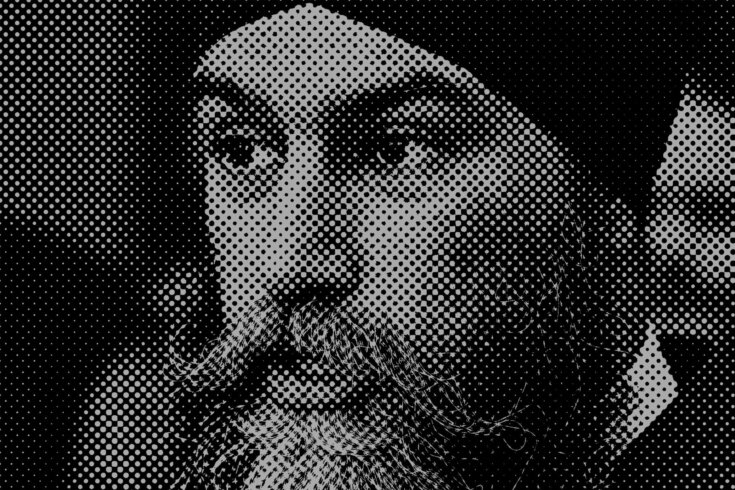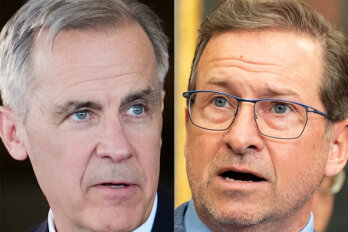When Jagmeet Singh was elected leader of the New Democratic Party in 2017, he was hailed as the left’s answer to Prime Minister Justin Trudeau. Accomplished, fashionable, energetic, young, Singh carried the promise of a renewed party focused on its social democratic roots and ready to make inroads with voters. Singh was meant to mark a new era for the NDP and, perhaps, a path to Sussex Drive.
Today, the NDP finds itself in an awkward parliamentary, electoral, and organizational spot. Firmly third in the polls—and the fourth party by seat count in the House of Commons—the NDP is bound to the Liberals by its March 2022 supply and confidence agreement, or SACA, as wonks call it. That deal is designed to keep the minority Liberals in power for progress on policy near and dear to the NDP.
The SACA bargain isn’t exactly Faustian, but its trade-offs are real. A pharmacare framework is now in place. The dental care program has launched. It is insufficient and slow to get rolling, but millions are already eligible for coverage, even if dentists are reluctant to sign on. Federally regulated workers, roughly 1 million of them, now have ten days of paid sick leave. Starting in 2025, those same workers will be further protected in their collective bargaining and strike rights by a ban on scab labour.
The NDP was central to these achievements. But what will they earn the party? The battle lines for the next election are already taking shape, with Pierre Poilievre and his Conservatives looking to tie the NDP to the Liberals, casting the relationship, cynically and falsely, as a “coalition.” The Tories—whose new ads paint the NDP leader as “Sellout Singh”—will work hard to link the two parties and attack them as one, pinning every failure or letdown on both sides at once, a shameless twofer that might just work.
The Liberals will try to claim the bulk of the credit for the good-news stories, marginalizing their SACA partner, leaving the NDP stuck, potentially, in the worst spot of all: blamed for the government’s failures and without credit for its successes. Substantively, in terms of the good (sometimes mixed) of the policies the country now enjoys, all of this is beside the point. Nice things are nice things. But, electorally, the conundrum matters a great deal as each federal party tries to position itself ahead of judgment by the electorate.
At the end of July, the NDP was sitting at about 17 percent in the aggregate polls, a mere seven points behind the Liberals, but a far stretch from the Conservatives, who enjoyed 42 percent support. Looking at data from 338Canada, a polling aggregator and analysis site run by Philippe J. Fournier, the NDP’s fortunes stretching back to 2022 look more or less fixed, varying a tad here and there but consistently hovering near or just under the 20 percent mark.
While the summer of 2023 marks the emergence of a distinct pattern between the Conservatives and Liberals, the former shooting up in the polls and the latter dropping like a stone, the NDP simply floats along, heading nowhere in particular, and certainly not up.
It wasn’t always so. In 2011, the NDP won an unexpected 103 seats under leader Jack Layton and became the official opposition for the first time in its history. This moment marked an electoral high-water mark for the party. As writer and political strategist Matt Fodor argues in From Layton to Singh: The 20-Year Conflict behind the NDP’s Deal with the Trudeau Liberals, it also coincided with its ideological shift toward the centre, a move away from socialism and grassroots politics and a turn toward a more centrist and professionalized, centralized party politics. It didn’t hurt that the NDP surge, driven by wins in Quebec, also coincided with the collapse of the Bloc Québécois in that province.
During the 2015 election, it looked as if the NDP, led by Thomas Mulcair after Layton’s death, could form government. The party shifted further to the centre, vowing not to run a deficit to pay for government programs. The move earned a rebuke from Trudeau, then the leader of the party in third position, who accused Mulcair of “austerity.” Mulcair had misread the moment. Voters weren’t worried about deficits and debt—issues that had dominated politics in the 1990s. They wanted their growing list of problems dealt with and were ready for the government to spend on solutions. The blunder paved the way for Trudeau to outflank the social democrats on the left.
Ever since, the history of the NDP has been marked by a failure to capture opportunities and turn them into electoral advantage. The Liberals, in 2015, went on to form a majority government with 184 seats, and the NDP dropped 59 seats to 44—their second-best showing ever but a decided demotion. In 2016, the party ousted Mulcair. Under his replacement, Jagmeet Singh, the party won 24 seats in 2019 and 25 in 2021. According to Fournier’s 338 projection model, as of late July, the NDP is projected to win 17 seats, with a range of 11 to 30 seats.
The new beginning Singh was meant to usher in never arrived. The party’s capacity to advance leftist causes produced policy success under SACA, but that was thanks to a particular set of circumstances—a minority Parliament and a willing Liberal Party—which is hard to replicate. The party’s electoral success is a different story, and so is its future. Under a Conservative Party government, with something in the range of a dozen to just under three dozen seats, the NDP would be utterly diminished. Their capacity to influence government would be reduced, and as the third or fourth party in the Commons, they’d fall short of enjoying the perks of the official opposition—which include more speaking time in the Commons, a better billing during Question Period, the right to be consulted by the government, greater resources, and, likely, more media coverage.
The NDP is also facing the worst-case scenario for any national political party: a crack-up. There are growing calls within the Alberta faction, now led by Naheed Nenshi, to separate from the federal party as the provincial wing seeks to distance itself from federal policies unpopular among members—SACA, with its support of the Liberals, being a source of particular ire.
Singh is fighting to make the case to keep the federal and provincial wings together, arguing it’s the best way to defeat the Conservatives wherever they may be. Singh might succeed in keeping the party united, thanks more to inertia than the power of persuasion, since breaking a party apart is hard, uncertain, and resource-intensive work. But the weaker the federal party is, and the more at odds it seems with the goals of its provincial wings, the harder it is to argue the NDP would be better as a single unit.
Staring down a likely return to the political wilderness and a possible schism are NDP supporters asking what the party is doing, what their long-term goals are, what their strategy is for reaching those goals, and who they expect will get them there. Answers haven’t exactly been forthcoming.
A former NDP staffer granted anonymity so they could speak freely doubts the party has good answers to these questions. He sums up a critique of the party by concluding, “No one would think to invent the NDP if it didn’t exist right now as it currently exists.” With the party failing to live up to a moment marked by anxiety, frustration, and fear, it often resembles the old moniker of “the conscience of the Liberal Party” or “Liberals in a hurry” rather than a distinct entity.
Underlying the party’s challenges, explains the former staffer, you find overlapping and intersecting material, strategic, and ideological problems. For one, the party got smaller after 2011 and 2015, which meant there were fewer resources—money, time, staff, MPs, attention—to go around. A smaller organization and fewer resources makes it harder to keep things running, to grow the base, to fundraise, and to mobilize supporters. That leads to less of the same. It’s a vicious cycle.
Given that the NDP is a federated party, sharing a common organizational structure nationally and provincially, it must also reckon with its talent moving around. When the party wins in British Columbia, Alberta, or Manitoba, federal staff—even MPs—become tempted to be recruited. In February, for instance, veteran MP Daniel Blaikie left to join NDP premier Wab Kinew in Manitoba. People like to be in power, or they get tired of the Ottawa grind. So they go, leaving the federal party weaker. It’s hard to blame them.
Leadership is also an issue, and that means Singh. After 2015, the party didn’t reset properly as it returned to the far-flung reaches of the House of Commons. “I think that comes down to a question of leadership, of never really reckoning with that strategic calculus of what it is that a small party should be doing in that position,” the former staffer says. That has led to a caucus that isn’t sufficiently organized and kept on the same page. It’s also led to a party that’s existentially adrift. A post-mortem report, prepared after the party’s 2021 setback, highlighted criticisms of Singh’s vague messaging. “It’s like someone is drowning: Jagmeet is very caring and genuinely understands what the person is going through. He then tells them other leaders cannot help,” one campaign insider said, according to the report. “But then he didn’t throw a buoy, a rope that gives hope of getting out of there.”
Those expecting bold, buoy-throwing actions from the party should be prepared to be disappointed. Critiques such as Matt Fodor’s in From Layton to Singh, in which he chastises the NDP for moving to the centre and abandoning the grassroots, are common, leading to the question: What’s the plan now? Or, perhaps, what should be the plan? The former staffer doesn’t see any “big strategic ideological vision” from Singh and his team. Instead, he notes, “as I can tell, the plan is to keep the lights on; and I think it’s very hard to get people to pull in the same direction to keep the lights on.”
An affinity for the status quo reflects a familiar problem within large organizations that are slow to change and that rely on known faces year after year as staff fight to keep the little ground they have. When times turn lean, as they have now, it’s difficult to imagine breaking out of the rut.
Reviving the NDP will take the work of years, but that work must be grounded in a long-term strategy that starts with an emphasis on a return to the party’s original commitments to class struggle. The NDP voted to remove references to socialism from its constitution in 2013 to, as then leader Mulcair put it, use the “language that resonates with a wider public in Canada.” Just over ten years later, the word is more potent than it’s been in decades—and far less taboo—as the country struggles with an affordability crisis, corporate depredation and wealth hoarding, a climate crisis, an inadequate welfare state stretched thin, an absence of a coherent industrial strategy, and plenty more.
As the Conservatives target blue-collar workers and focus on bread-and-butter issues, they remind the left that jobs and the economy tend to be top issues for the electorate. That’s not to say that the NDP ought to abandon those struggling for rights, recognition, safety, and justice—they shouldn’t. But class is a central, big-tent unifying force, and that way lies better politics as you build a movement that extends beyond the day-to-day polls and develop the capacity to mobilize supporters while setting the national agenda. The NDP has already had a taste of this with the supply and confidence agreement and both dental care and pharmacare. A strategic vision executed correctly by the right people could lead to more and better electoral and policy outcomes too.
A new strategic vision requires a change in leadership. The next federal election will be the third with Singh at the NDP’s helm. After 2019, and especially 2021, the party ended up in an accidental position of influence with the Liberals’ minority government—which, to their credit, they made the most of. But counting on being in the right place at the right time isn’t a viable long-term plan. Beyond that, Singh has been unable to replicate the NDP’s surge in 2011 or its strong performance in 2015.
If the 2025 election ends up producing a result similar to that of the past two elections for the NDP, that ought to mark the end of the Singh years. It will be a chance to start afresh, to go all in on class politics. In other words, the party should return to its roots—and side with a leader who can do just that.




